Physical Address
304 North Cardinal St.
Dorchester Center, MA 02124
Physical Address
304 North Cardinal St.
Dorchester Center, MA 02124
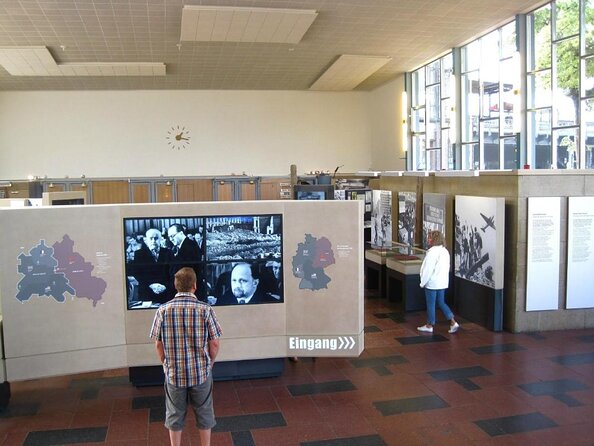
Berlin’s complex past during World War II is a captivating story waiting to unfold. This private walking tour guides visitors through the city’s most significant WWII sites, revealing poignant details and personal anecdotes. From the remnants of the Berlin Wall to the Reichstag Building, you will explore the impact of the war on Berlin’s identity and gain a deeper understanding of this pivotal chapter in history. Whether a history buff or casual explorer, this immersive experience promises to leave a lasting impression.
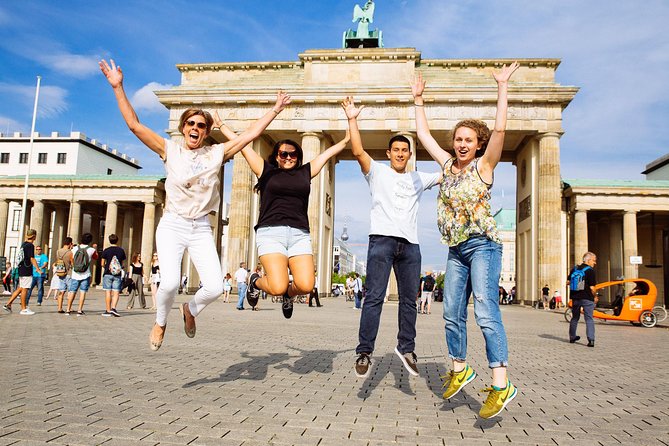
You can also read our reviews of more tours and experiences nearby.
One of the first stops on the Berlin walking tour is Museum Island, a UNESCO World Heritage site that houses five world-renowned museums.
Visitors can explore the Pergamon Museum‘s ancient Middle Eastern artifacts, the Old National Gallery’s Neoclassical and Romantic art, or the Bode Museum’s renowned sculpture collection.
The island’s architecture and cultural significance make it a must-see destination.
Tour participants are able to wander the grounds and admire the buildings from the outside, gaining historical context from their knowledgeable local guide.

After exploring the remarkable Museum Island, the walking tour continues to the iconic Reichstag Building. This seat of German parliament is a powerful symbol of the country’s democracy.
Visitors can:
The Reichstag exemplifies Germany’s journey from its turbulent past to its vibrant democratic present.
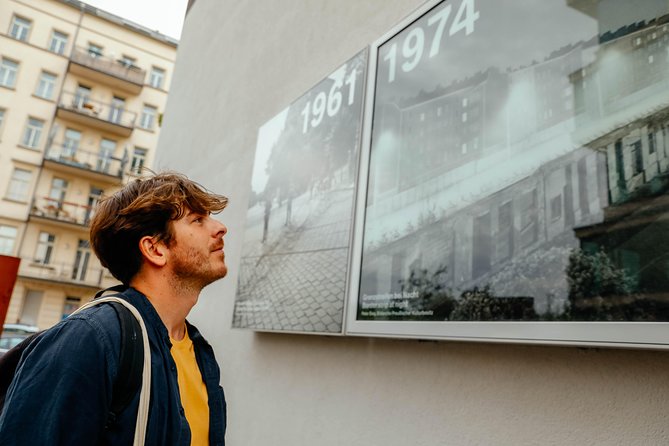
Next, the walking tour leads visitors to the iconic Checkpoint Charlie, a key crossing point along the Berlin Wall during the Cold War era. This famous border checkpoint was the site of tense standoffs between American and Soviet tanks in 1961. Today, it serves as a poignant reminder of the division that once split the city.
| Checkpoint Charlie | | |
|———————|—|—|
| Established | 1961 | |
| Purpose | Border crossing between East and West Berlin | |
| Significance | Symbol of Cold War tensions and division of Berlin | |
Visitors can stand in the footsteps of history and learn about the site’s pivotal role in the city’s past.
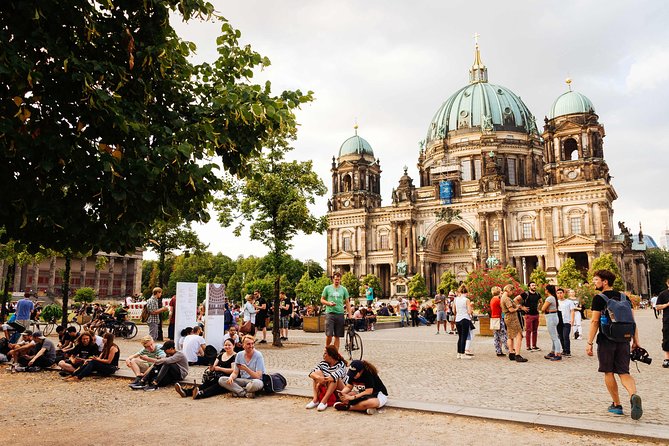
From Checkpoint Charlie, the walking tour leads visitors to the Brandenburg Gate, one of Berlin’s most iconic landmarks.
Towering at 26 meters tall, the gate is a grand neoclassical structure with its famous quadriga statue on top.
The gate has witnessed pivotal moments throughout Berlin’s tumultuous history:
The Brandenburg Gate has borne witness to pivotal moments in Berlin’s turbulent past.

As visitors continue their journey through Berlin’s history, they reach the solemn Memorial to the Murdered Jews of Europe. This powerful monument, designed by architect Peter Eisenman, consists of 2,711 concrete slabs arranged in a grid, creating an immersive and thought-provoking experience. The varying heights of the slabs symbolize the loss and disruption of lives during the Holocaust. Visitors can wander through the maze-like memorial, reflecting on the tragedy and honoring the memory of the victims.
| Key Facts | |
| — | — |
| Designer | Peter Eisenman |
| Opened | 2005 |
| Total Slabs | 2,711 |
| Size | 19,000 square meters |
| Location | Cora-Berliner-Straße, 10117 Berlin |
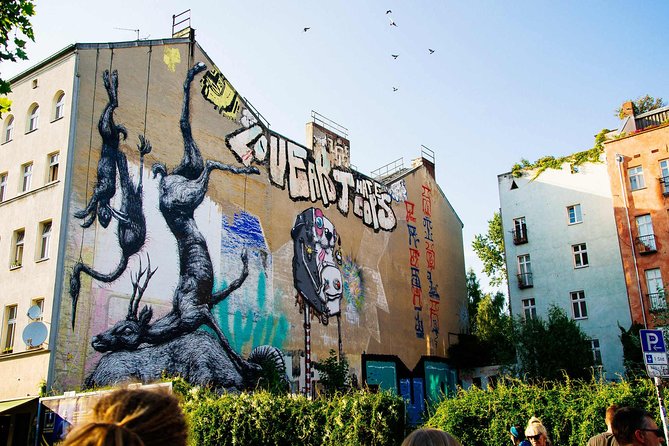
Leaving the solemn Memorial to the Murdered Jews of Europe behind, visitors approach the Palace of Tears, a poignant reminder of Berlin’s divided past. This former border crossing station witnessed emotional farewells as East Germans bade loved ones goodbye before crossing into the West.
The building’s striking architecture and somber atmosphere evoke the pain of separation:
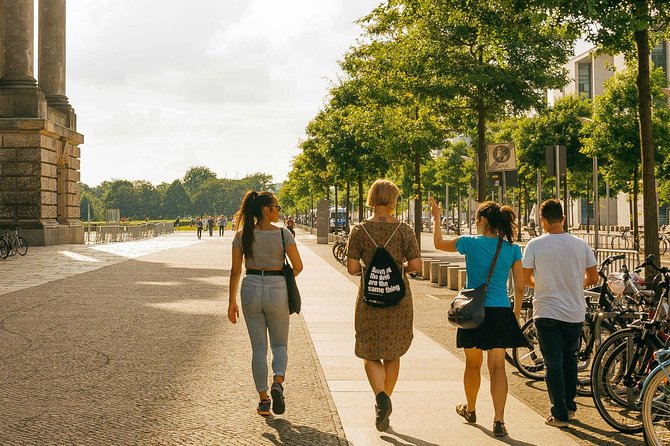
After passing the solemn Palace of Tears, visitors reach Bebelplatz, a site forever etched in the dark history of Nazi Germany.
On May 10, 1933, this square was the scene of a notorious book burning event, where the Nazis publicly destroyed thousands of "un-German" books.
The empty underground room beneath the square now serves as a memorial, with glass panels allowing visitors to see the empty bookshelves, a haunting reminder of the censorship and cultural repression that characterized the Third Reich.
Today, Bebelplatz stands as a somber testament to the dangers of intolerance and the power of the written word.
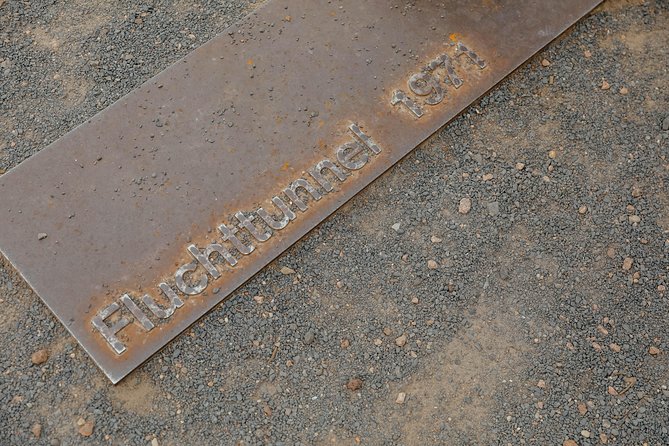
Though the group has now passed the haunting reminder of Nazi book burnings at Bebelplatz, the tour’s focus shifts to an even more sinister location – the Führerbunker.
This underground bunker complex served as the final refuge of Adolf Hitler and his inner circle as the Third Reich crumbled around them.
Visitors can:
We've Also reviewed these nearby tours and experiences
There are several highly-rated cafes and restaurants near the tour’s meeting point, including the traditional German cafe Zum Starken August and the casual bistro Fritz & Co, both known for their local cuisine and cozy atmospheres.
The tour does not include admission to the museums, so visitors can take photos from the outside only. Photography policies inside the attractions vary, so it’s best to check with the individual museums.
The tour is generally suitable for families and children, though the content focuses on WWII history. The outdoor locations and photo stops along the route may be more engaging for younger participants. Admission to museums is not included, providing flexibility in the itinerary.
To get to the meeting point, you can take public transportation. The tour meeting point is located on Oranienburger Str. 36, which is near several metro and bus stations. Plan your route ahead of time to arrive at the designated location.
The tour offers guides in multiple languages beyond English, including German, French, Spanish, and Italian. Customers can request their preferred language when booking to ensure an engaging and informative experience tailored to their needs.
The WWII Private Walking Tour with Locals in Berlin offers a poignant and immersive exploration of the city’s tumultuous past. Guided by knowledgeable locals, participants explore significant sites, uncover personal anecdotes, and gain historical context, providing a profound understanding of how the war shaped Berlin’s identity. This tour is a must-visit for history enthusiasts seeking to reflect on the impact of WWII on the city.